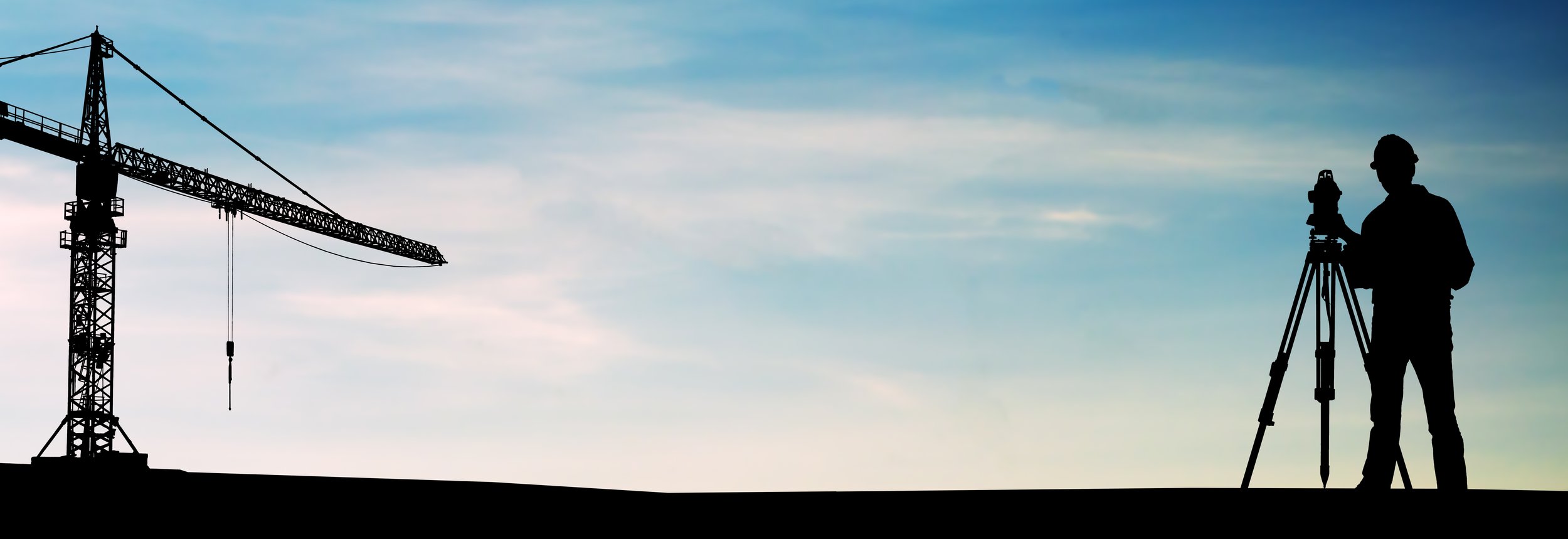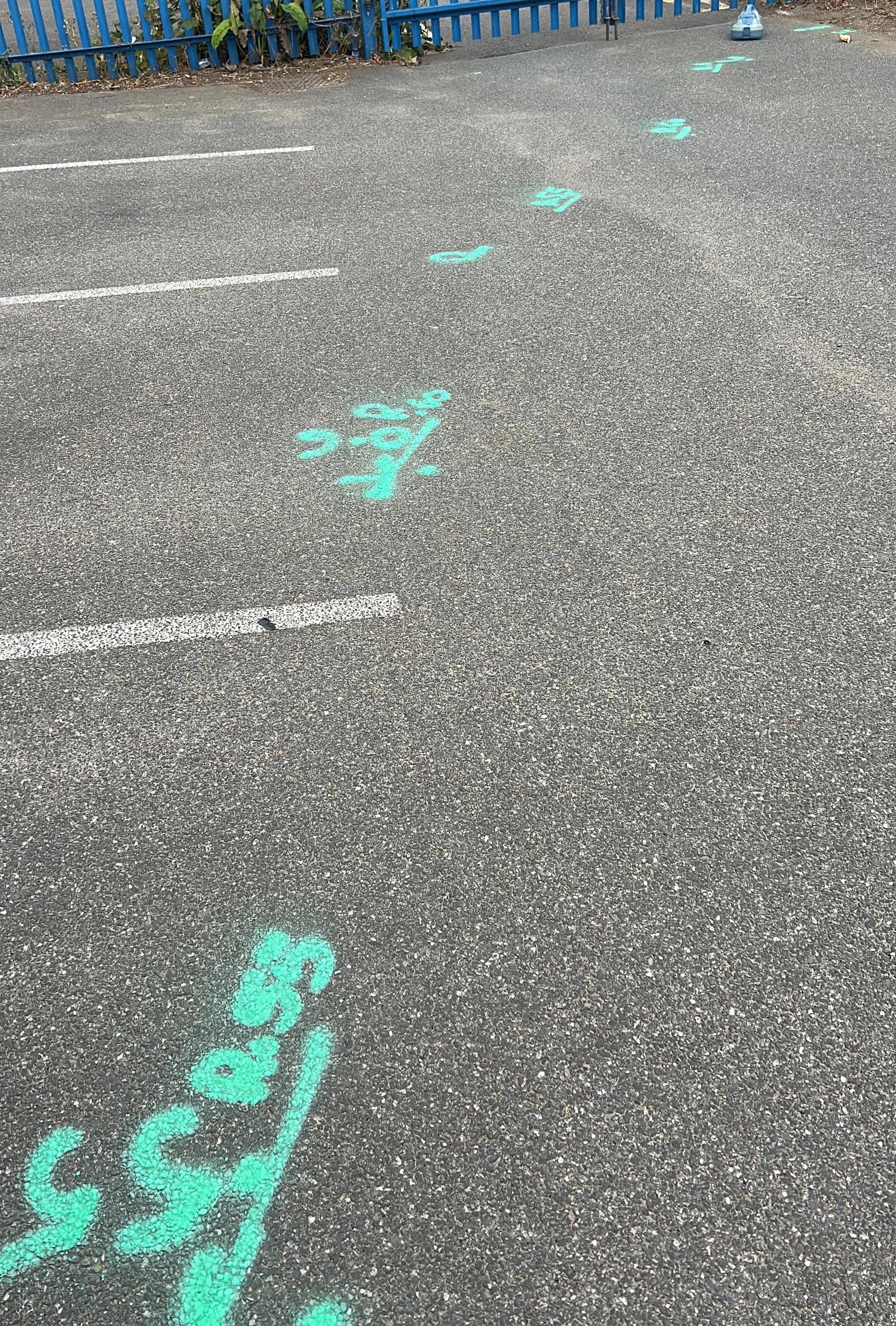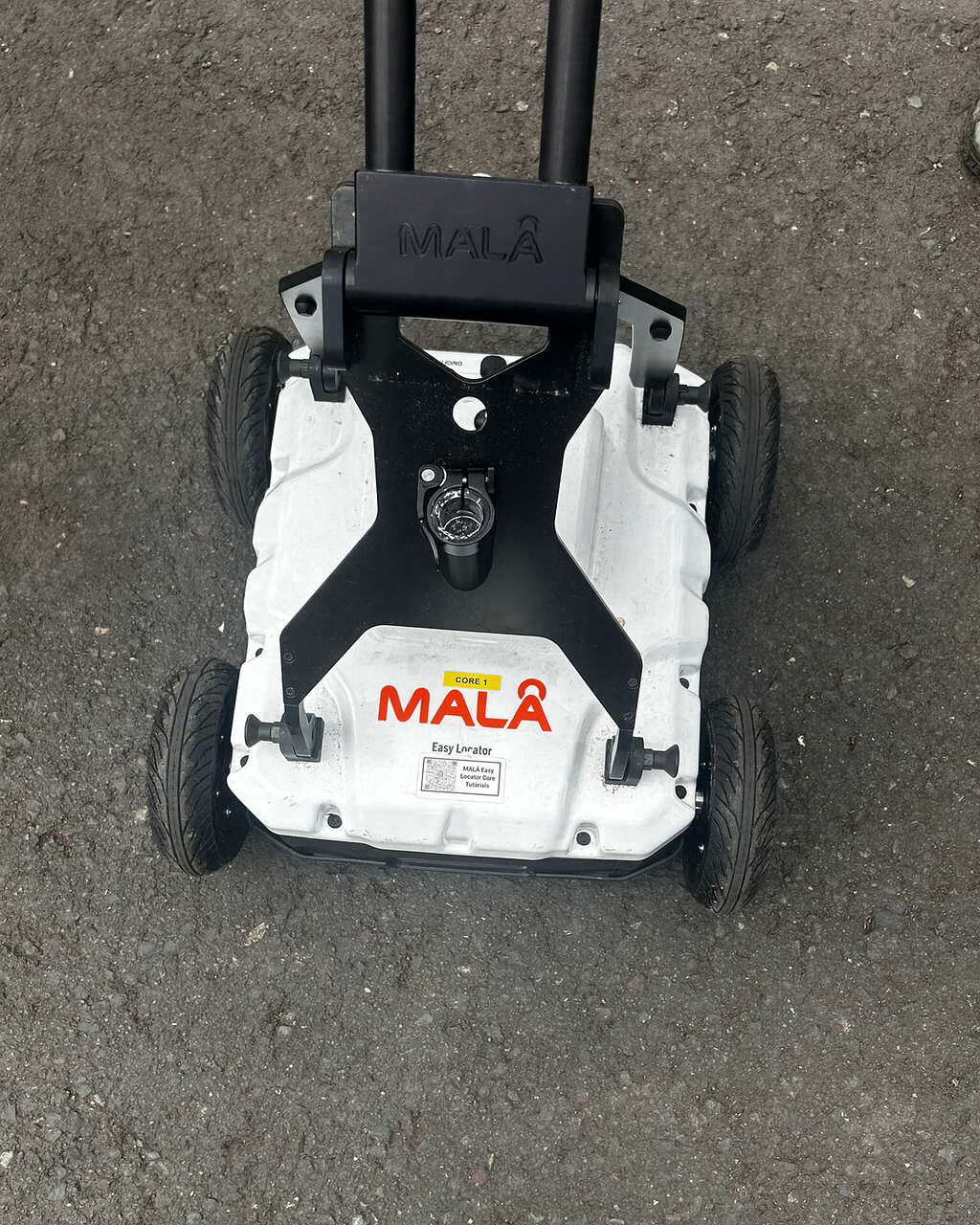
MONITORING SURVEYS
STRUCTURAL & DEFORMATION MONITORING
For Live Construction & Infrastructure Projects
Accurate monitoring is essential when you're working near live assets, sensitive structures or high-risk ground conditions. At AKN Engineering, we deliver precision monitoring surveys for highways, civils, earthworks, piling, bridge works and large-scale construction projects — giving main contractors the data they need to manage risk, protect programme and meet compliance requirements.
Understanding movement, deformation and settlement over time allows you to identify early warning signs before they become costly variations, safety incidents or delays. Under UK HSE regulations and CDM 2015, duty-holders must assess and control impact on adjacent structures and assets. In many NEC and Highways England frameworks, monitoring is now a mandatory risk-mitigation measure, not an optional extra.
WHAT IS STRUCTURAL MONITORING IN CONSTRUCTION?
Want to discuss a project? Call us on 01279 927033
A Monitoring should be one of your first considerations when planning works near existing assets or sensitive ground:
Pre-Excavation & Piling Works — Essential before deep excavations or piling within the influence distance of existing structures, highways or utilities.
Bridge Deck & Highway Works — Monitor embankments, abutments, deck movements and approach roads during construction phases.
Adjacent to Rail, Highways or Heritage Assets — Mandatory where works could affect Network Rail, Highways England or protected structures.
Ground Stabilisation & Basement Projects — Track settlement, heave and lateral movement during sheet piling, underpinning or basement construction.
Design & Build Contracts — Provide evidential proof of no damage for contractual compliance and warranty requirements.
Stakeholder Assurance — Demonstrate compliance to clients, local authorities, asset owners, insurers and neighbouring residents.
WHEN DO YOU NEED A MONITORING SURVEY?
Want to discuss a project? Call us on 01279 927033
WHAT WE DELIVER
A comprehensive monitoring survey provides the data and evidence needed to manage risk, prove compliance and protect your project:
Baseline & Control Establishment — Pre-construction surveys establish baseline conditions, control networks and initial readings before works commence.
Automated or Manual Data Acquisition — Continuous or periodic monitoring using total stations, prisms, GNSS sensors, tilt meters, crack gauges or inclinometers depending on risk profile and programme.
Live Data Dashboards — Cloud-based monitoring platforms with real-time alert thresholds, audit trail history and visual trend analysis—not just raw numbers.
Engineer-Interpreted Reporting — Weekly summaries, threshold breach alerts, trend analysis and professional commentary from qualified engineers with site experience.
CAD/PDF Outputs — Coordinate lists, movement vectors, time-series graphs and visual overlays compatible with your project documentation systems.
Completion & Handover Pack — Full dataset archive, final monitoring report and evidence pack for O&M files, safety files, warranty documentation and QA records.
All data is provided digitally via secure cloud platforms or file transfer. Monitoring durations are flexible and can be extended or reduced based on observed performance and risk assessment.
Find out more about how we work… Call us on 01279 927033
OUR CLIENTS
WHY WORK WITH US FOR MONITORING SURVEYS?
✔️ Highways & Infrastructure Specialists — We're not general surveyors. We understand civils, highways, rail and infrastructure projects inside out.
✔️ Engineer-Led Delivery — Our monitoring data is analysed and reported by qualified engineers with real construction site experience—not just technicians collecting readings.
✔️ Fast Mobilisation — We respond quickly to install monitoring systems when your programme demands it, usually within 24–48 hours for urgent projects.
✔️ Live Data & Alert Systems — Cloud-based dashboards with configurable alert thresholds, automated notifications and full audit trail visibility.
✔️ Fully PAYE Qualified Team — No anonymous subcontract labour. You get our experienced, qualified engineers and surveyors on your site.
✔️ Seamless Integration with Other Services — Monitoring works alongside our setting out, topographic surveys and utility detection—single supplier, reduced admin, better coordination.
Scope & Methodology We define monitoring points, frequency, equipment type, alert thresholds and deliverable formats in collaboration with your team and design consultants.
Control & Installation Establish robust control networks, install monitoring targets (prisms, sensors, markers), verify stability and set initial baseline readings.
Baseline Survey Pre-construction surveys capture existing conditions before works commence—creating the datum for all future comparisons.
Data Acquisition Manual or automated readings depending on risk profile, programme requirements and site access constraints. Frequency ranges from continuous live monitoring to weekly or monthly surveys.
Alerts & Analysis Automated threshold breach alerts notify stakeholders immediately if movement exceeds pre-agreed tolerances. Engineers analyse trends and provide professional commentary.
Reporting & Handover Regular progress reports (weekly/monthly), final completion report and full data archive for project records, O&M files and warranty documentation.
THE MONITORING PROCESS EXPLAINED
Stage 1: Topographical Survey — Initial site surveys establish control and identify existing features before monitoring installation.
Stage 2: Utility Detection & Setting Out — Our survey teams locate utilities and set out works, coordinating monitoring point positions to avoid clashes.
Stage 3: Monitoring Installation & Baseline — Monitoring targets installed and baseline readings established before construction commences.
Stage 4: Construction Phase Monitoring — Continuous or periodic monitoring throughout the works, with alerts and reporting to manage risk.
Stage 5: As-Built Survey & Handover — Final as-built surveys confirm constructed conditions and monitoring data archives prove compliance.
By offering the complete spectrum of surveying and monitoring services, we eliminate coordination delays and provide a single point of accountability. Many clients choose our Site Engineering Package, which bundles monitoring with topographical surveys, setting out and as-built documentation.
INTEGRATION WITH OUR OTHER SERVICES
Structural & Deformation Monitoring ⤵
Automated or manual measurement of horizontal and vertical movement using total stations, prisms, GNSS sensors, tilt meters or crack gauges. Suitable for bridges, retaining walls, façades, earthworks slopes and live highways assets.
Geotechnical Monitoring ⤵
Monitoring settlement, heave, groundwater or lateral movement in relation to deep excavations, sheet piling, basement works and embankments. Includes inclinometers, piezometers and settlement plates.
Remote / Live Data Monitoring ⤵
Cloud-based dashboards with alert thresholds, audit trail history and analysed reports—integrated with project management systems or client portals.
TYPES OF MONITORING SURVEY WE PROVIDE
Want to discuss a project? Call us on 01279 927033
FAQs
-
Costs vary depending on site size and location. Expect £200-£800 for most residential or small commercial sites. Contact us for a tailored quote.
-
Most searches are completed within 5-10 working days from instruction, depending on the utility provider's response times.
-
A search obtains existing records from utility companies without visiting the site. A survey involves physically detecting and mapping utilities on-site with electromagnetic locators and GPR. Most projects benefit from both.
-
This is common. Utility records are frequently incomplete, particularly for older infrastructure, private services, and abandoned utilities. This is why field verification is recommended.
-
Our standard search covers statutory undertakers and major infrastructure owners. Private services are rarely recorded centrally and require field detection.
-
Desktop Utility Searches (Records Only)
(No site visit — data sourced from statutory utility providers)
Standard Desktop Utility Search includes records from all statutory utilities: gas, water, electricity, sewerage, and telecommunications.
Best for early-stage design and planning before excavation or field survey.
Core Utilities Search (Gas, Water, Power)
A focused package covering gas, potable water, and electricity only — ideal for smaller or low-risk projects.Extended Desktop Utility Search
Covers everything in the Standard Search plus drainage, street lighting, traffic signals, and fibre-optic networks for a fuller picture of underground infrastructure.
FreeView Overlay (Desktop Package)
Combines all available utility records into a single georeferenced CAD or PDF drawing, showing every network layer in a single view.Perfect for design coordination, feasibility studies, and project planning.
Desktop searches are record-based only — not verified on site. Absence of a record does not mean absence in reality. Accuracy and depth data vary depending on the provider.
-
Our utility search service aligns with industry best practices including PAS 128:2022 (desktop searches are Quality Level D), CDM Regulations 2015, and HSG47 guidance on avoiding danger from underground services.
-
Excavating without adequate utility information exposes your project to significant legal and safety risks. Under the Health and Safety at Work Act 1974, employers must take all reasonably practicable steps to protect workers. CDM Regulations 2015 require clients and principal contractors to identify underground services during the pre-construction phase.
Industry data suggests over 60,000 utility strikes occur annually in the UK. The average cost of a gas main strike ranges from £30,000-£100,000+ including emergency response, repairs, and site downtime. Average project delays from major strikes extend 2-6 weeks, with potential for criminal prosecution and unlimited fines for serious incidents.
A modest investment in utility searches provides both practical intelligence and legal protection, demonstrating due diligence in discharge of safety obligations.
-
Once you receive your report, review data confidence levels, depth information, and any conflicting data. Services marked "Unknown" or "Approximate" require field verification.
Low-Risk Sites — If your search reveals minimal utilities and all providers responded, proceed with vigilant excavation practices.
Medium-Risk Sites — Where utilities are present but reasonably documented, we recommend electromagnetic location to verify positions.
High-Risk Sites — Urban locations or projects near major infrastructure require comprehensive GPR and electromagnetic surveys. Trial pitting may be necessary at critical locations.
Use the CAD overlay to inform foundation design and drainage layouts. Early identification allows design modifications that avoid costly utility diversions, which typically require 8-16 weeks lead time and can cost £5,000-£50,000+.
If more than 12 months elapses between your search and ground works, request an updated search to capture recent changes.

LOCATIONS WE COVER
HERTFORDSHIRE
BEDFORDSHIRE
CAMBRIDGESHIRE
NORTHAMPTONSHIRE
LONDON
ESSEX
KENT
OXFORDSHIRE
BERKSHIRE
NORFOLK
SUFFOLK
LINCOLNSHIRE
RUTLAND
✔️ Unmonitored construction near existing assets can lead to:
Project delays of several weeks when structural damage occurs
Repair costs exceeding £50,000+ for adjacent asset damage
Claims, compensation events and contractual disputes
Safety incidents affecting workers, public or neighbouring properties
Programme disruption and unplanned temporary works requirements
Prosecution under HSE regulations or CDM 2015 for failure to manage risk
Our monitoring prevents these problems.
Accurate tracking ensures structural safety, proves compliance, protects adjacent assets and provides the evidential records you need for contract administration, NEC compensation events, design validation and handover.
Built-In Risk Management and Compliance
We interpret complex structural behaviour, adapt monitoring strategies to emerging risks, and coordinate seamlessly with construction teams—keeping every stakeholder informed and your project protected from claim exposure.
WHY MONITORING ACCURACY MATTERS
Want to discuss a project? Call us on 01279 927033
OTHER WAYS WE CAN HELP YOU
SITE ENGINEERING
Site engineering services play a critical role in the construction process, providing expertise and support to ensure the successful execution of a project. These services encompass a wide range of activities, including site investigation, surveying, and topographical mapping. Site engineers work closely with the design team and construction crew to establish the necessary groundwork, determine the optimal layout, and oversee the implementation of plans on-site.
TOPOGRAPHICAL SURVEYS
Topographical surveys are detailed assessments of the natural and man-made features on a specific piece of land. These surveys provide crucial information about the elevation, contours, and physical characteristics of the site, including buildings, trees, bodies of water, and other relevant elements. By conducting topographical surveys, engineers and planners can gain a comprehensive understanding of the terrain, which is essential for making informed decisions during the design and construction phases of a project.
SETTING OUT
Setting out is a vital process in construction that involves marking the precise locations and dimensions of structures, roads, or other elements on a construction site. It ensures that the project is executed accurately and in accordance with the design plans. Surveyors and engineers use various tools and techniques to establish reference points, levels, and alignments, allowing construction teams to follow precise measurements and positioning during the building phase.
AS-BUILT SURVEYS
As-built surveys are conducted typically at the completion of a construction project to document the actual constructed conditions of the site and its improvements. These surveys serve as a comparison to the original design plans and specifications provided by the engineer during the planning phase. By conducting as-built surveys, engineers can ensure that the constructed elements align with the approved design and meet all required standards and regulations.
MACHINE CONTROL
Machine control for earth moving involves the creation of precise digital models and plans, which are then translated into real-time instructions for construction equipment. Through the integration of advanced technologies such as GPS, sensors, and software interfaces, these machines are guided to execute excavation and grading tasks with exceptional accuracy and efficiency, resulting in reduced material waste, optimised project timelines, and enhanced overall productivity in earth-moving operations.
The main goal of volume calculation is to find out a volume of material that was mined or heaped up in predefined area and to verify if the volume corresponds to the expected value stated in project documentation. The volume is determined by a difference of topographies from two survey phases or by a difference between the survey and the project documentation.
MACHINE CONTROL
Request a Quote
Ready to request a quote for your Monitoring Survey?
Fill out the form below, and you can expect to hear from us within 24 hours.
(If you do not receive a response within 24 hours (Mon-Fri) please email office@aknengineering.co.uk)
TALK TO US
Experience the difference of working with industry experts who understand risk, compliance and construction programme demands.
If you would like to request a quote, discuss a project or have any other enquiries about Monitoring Surveys, Setting Out or Site Engineering, click the link button to get in touch.


















